Most of the air filtering products in the market nowadays come standard with a HEPA filter. But you might be wondering, are all HEPA filters the same size? In this post, we will be discussing that and many more features that a HEPA filter has. Go get your reading glasses on and let's get started.
If you're wondering if all HEPA filters come in the same size or form, they don't. Different brands use different layouts for their HEPA filters. Cylindrical and rectangular-shaped HEPA filters are the most commonly available.
For cylindrical shaped HEPA filters, the dimensions are typically:
- 155 mm to 200 mm in height
- 190 mm to 215 mm in diameter
For rectangular shaped HEPA filters, dimensions can range from:
- 150 mm to 190 mm in width
- 200 mm to 320 mm in length
Now that you know that not all HEPA filters come in the same shape or size, let us learn more about their uses and variations. How do they work? What does HEPA mean? For this and more insightful information, head on over to the rest of the article.
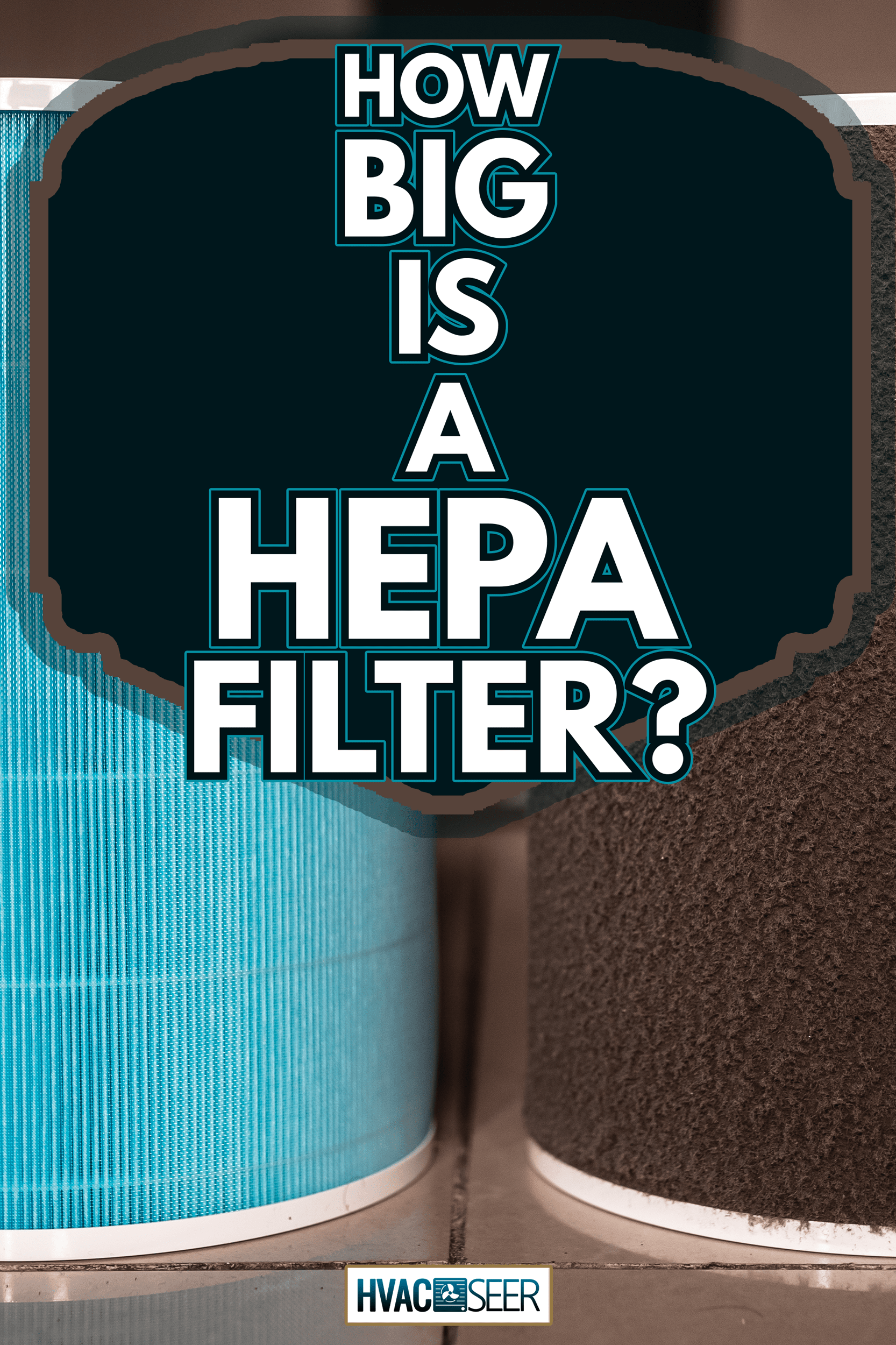
What Is A HEPA Filter?
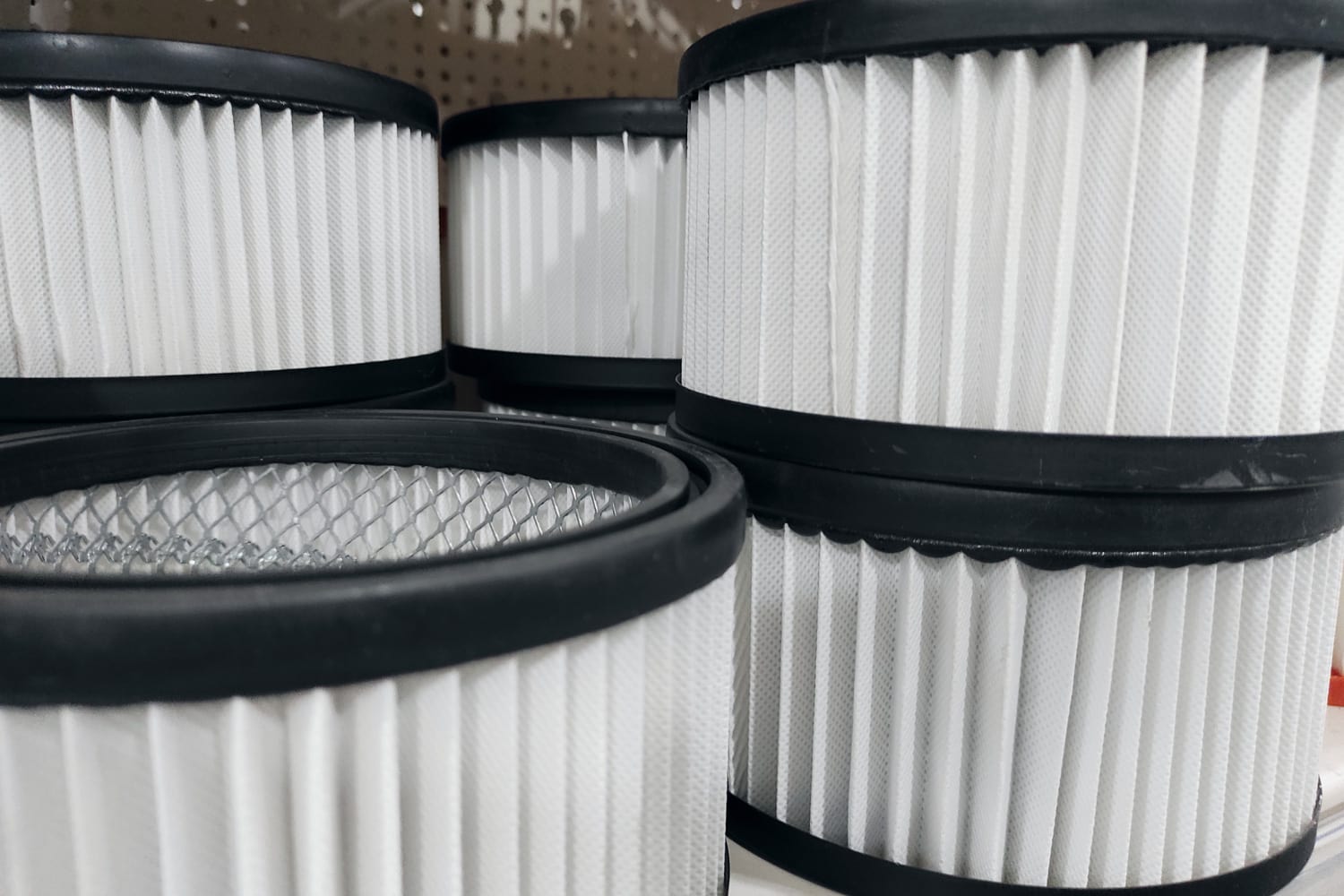
Before we get into the nitty-gritty stuff, let us first learn the basics about HEPA filters. HEPA or also known as the "High-Efficiency Particulate Air" filter, is a type of pleated fabric that is used on a lot of air filtering products to filter the air being drawn in.
HEPA filters can, theoretically, filter airborne particles with a size of 0.3 microns. 99.97% of dust, pollen, mold, bacteria, and some other airborne particles get tangled and trapped when going through a HEPA filter, according to the EPA.
"Why 0.3 microns?" you ask. Particles of that size are commonly composed of airborne particles capable of carrying viruses and diseases which could potentially affect a person's health.
When Was HEPA Filters First Developed?
The development of HEPA filters dates back to the closing years of World War 2. They were originally developed secretly by the military for use in their chemical and radiological experiments. The Atomic Energy Commission (AEC) chose HEPA filters to be used in all their exhaust systems as a way to keep the entire facility particle free. They were later manufactured commercially in the 1950s.
How Do They Work?
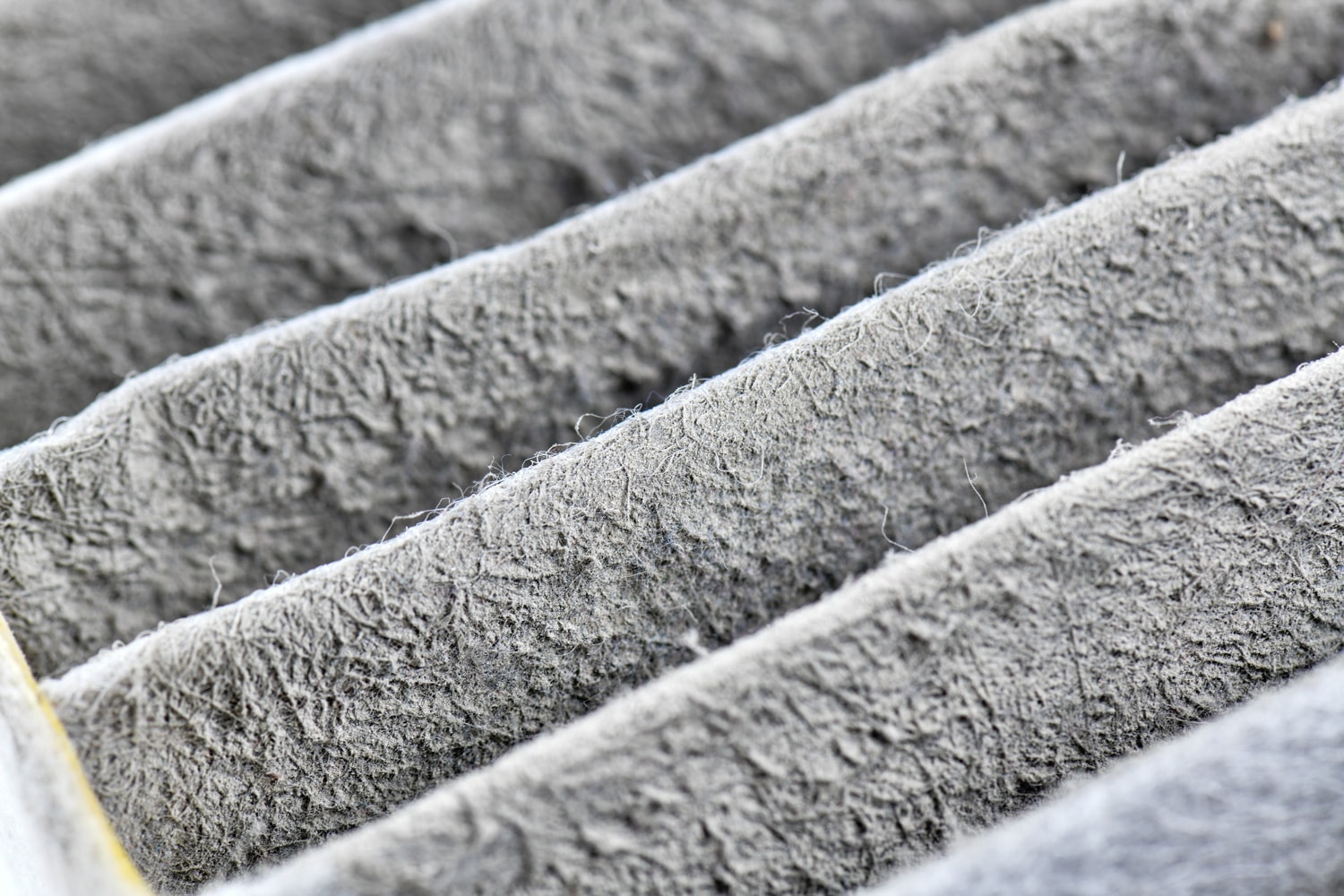
The best way to visualize how HEPA filters work is by visualizing a net and sizing it down a thousand times. Everything larger than the holes of that net gets caught and everything smaller than the gaps between the net passes through. Simple enough, right?
Consisting of tightly woven glass fibers, HEPA filters trap airborne particles in several ways through the following:
- Direct Impaction
- Sieving
- Interception
- Diffusion
Direct Impaction
As large contaminants get drawn into the filter, they collide with the filter's fibers and get stuck to it. These large contaminants are mainly comprised of dust, molds, and other types of pollen.
Sieving
How sieving works is when the air stream, that passes through the filter, carries a particle and passes through two fibers. Due to the particle size being larger than the gap between the tightly woven fibers, it becomes ensnared.
Interception
This method takes advantage of the agile characteristics of the air passing through the filter. Interception happens when the tightly woven layout of the filter catches the particles. Air is nimble enough to reroute around the fibers but the particles they carry are not. This makes them stick to the fibers and get "intercepted" along the way.
Diffusion
Diffusion works because the small, ultrafine particles that enter the filter move erratically. This erratic movement makes them collide with and tangled with the fibers.
Filter Ratings
Filter efficiencies are rated differently across different countries. In the US, the standard used to check for a filter's efficiency is the MERV Rating.
A Minimum Efficiency Reporting Value (MERV) determines a filter's capability to trap particles with sizes ranging from 10 microns to 0.3 microns. The better the filter, the higher the MERV rating it will achieve.
The highest MERV rating that the Department of Energy can give is a 20. Filters with a MERV rating of 17 - 20 can capture particle sizes smaller than 0.3 microns. At this size, the typical airborne pollutants are airborne viruses. When your filter is rated at this bracket range, you can be confident that it will keep you and your family safe.
Meanwhile, if your filter's MERV rating is only around 1 - 4. It means that it can only catch particle sizes above 10.0 microns. At this size, the pollutants are pollen and dust mites.
What Is A MERV Rating?
As stated earlier in this post, MERV stands for Minimum Efficiency Reporting Values. It determines, using a rating system, how effective a filter is in capturing airborne particles.
This rating was developed by the American Society of Heating, Refrigerating, and Air Conditioning Engineers (ASHRAE) to help consumers choose the best quality air filters.
What Happens When A Particle Penetrates the HEPA Filter?
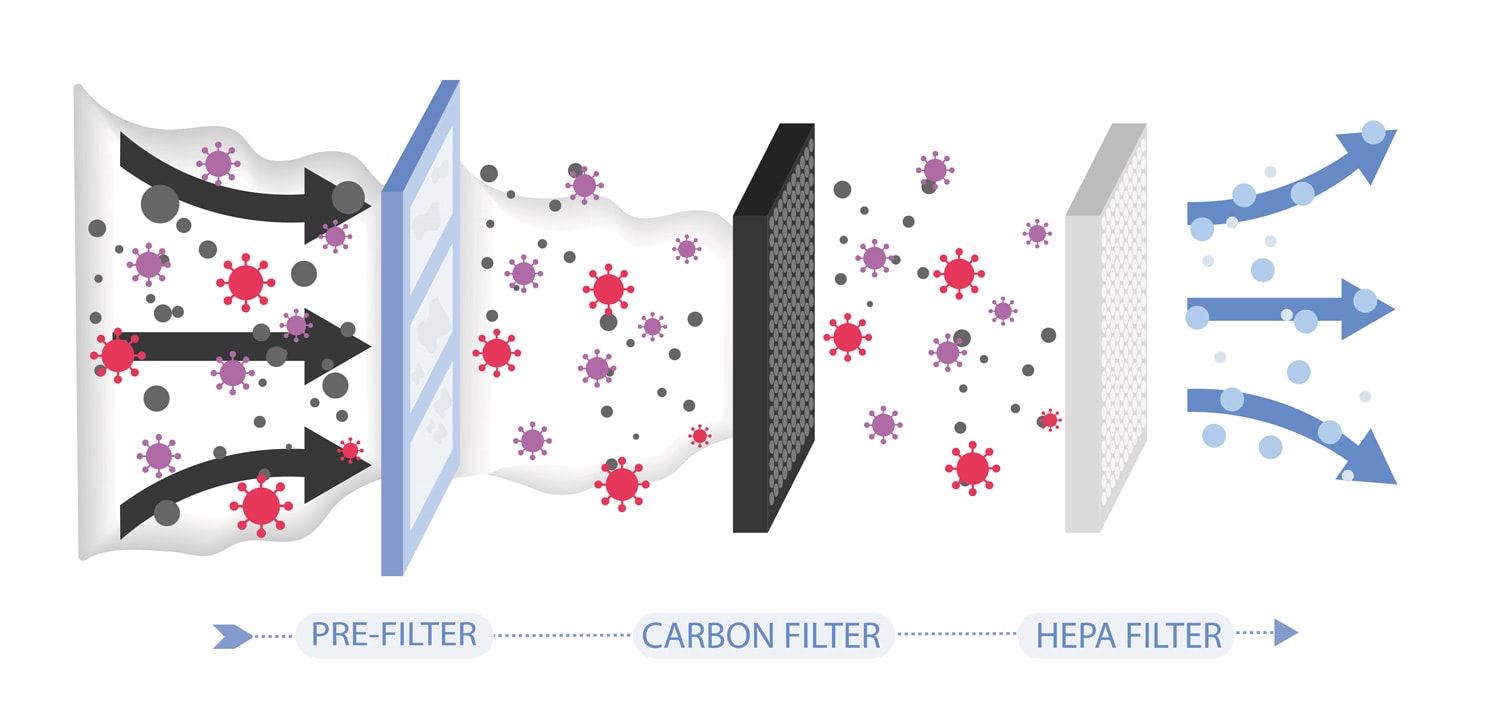
Nothing is perfect. Even a HEPA filter can theoretically, only trap 99.97% of airborne particles that goes through it. So, what happens to that 0.03% that penetrates the filter? Will they go straight to my lungs?
Worry not! All filtering products have another technology that works in tandem with the HEPA filter. There is a wide array of complementary technologies that brands use in tandem with the HEPA filter. The most commonly used are Activated Carbon filters.
True HEPA Filter vs HEPA Filter
As a consumer, we get fed with a lot of information about the products that we are possibly going to buy. In the case of filters, you might've heard about True HEPA filters. We have been discussing HEPA, but how is it different from True HEPA filters?
A True HEPA filter is the only type of HEPA filter that conforms to the DOE's standard for HEPA filtration. True HEPA filters have the highest efficiency and are the ones that hit the 99.97% filtration threshold. If a HEPA filter does not meet DOE's standard for HEPA filtration, it cannot be considered a True HEPA filter.
So when purchasing a HEPA filter, be sure to check if the one you're getting meets the industry standard of filtration. Some brands also do third-party testing that will prove their products adhere to DOE's standards.
How Often Should You Replace Your HEPA Filter?
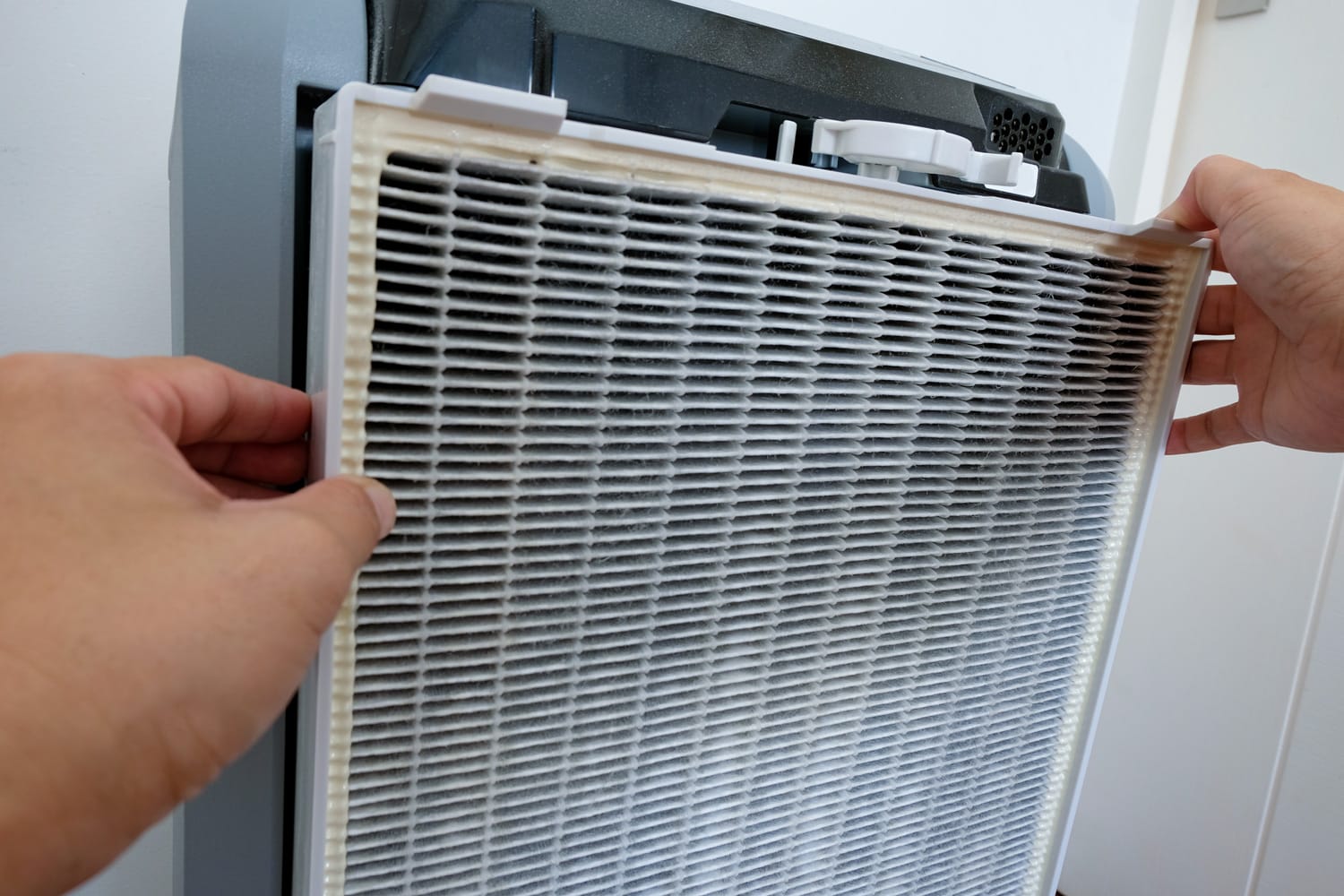
Knowing the exact time when you should replace your HEPA filter can be quite challenging. In general, companies will tell you that you should be replacing your HEPA filter every six to twelve months.
However, there are factors that could affect the lifespan of your HEPA filters such as rate of usage and geographic landscape.
Here are the factors that could affect the lifespan of your HEPA filter:
- Hours used per day
- Outdoor air pollution levels
- Indoor air pollution levels
- How often the pre-filter is taken care of
- Intensity or speed of the appliance
If you want to get technical on when you should change your HEPA filter, check it for yourself. You can purchase an air quality monitor apparatus to periodically check the air quality of your home. This way, you can know the numbers and can decide when is the best time to change.
Check out this EG Air Quality Monitor on Amazon.
Can HEPA Filters Help Prevent Covid-19?

In recent times, this has been a major talking point as to how effective HEPA filters are. Can it filter out this deadly virus we're currently facing? Air purifier companies have been working day and night to one-up each other in the race to manufacture the best product.
A NASA study on HEPA filtration confirmed that HEPA filters do indeed, filter and catch airborne particles that could cause Covid-19. The study shows that particles with approximately 0.125 microns in diameter, which is the typical size of airborne viruses (including Covid-19), can be effectively filtered out by high efficient HEPA filters.
However, many media outlets have been quick to scrutinize the effectiveness of air purifiers and their covid protection qualities. Their main point is that HEPA filters cannot filter particles with sizes smaller than 0.3 microns. But highly efficient HEPA filters that have ratings of 17 to 20 can easily filter out any airborne contaminants.
This means that when you buy, make sure that the air purifier you will purchase has HEPA filters that have undergone the proper industry testing and have a high MERV rating that would efficiently be able to capture airborne particles like the one causing Covid-19.
Another thing that the CDC wants to emphasize is that cleaning and maintaining the air purifier is very important if you want to maintain its effectiveness. "When used properly, air purifiers can help reduce airborne contaminants, including viruses, in a home or confined space," they stated.
To Wrap It Up
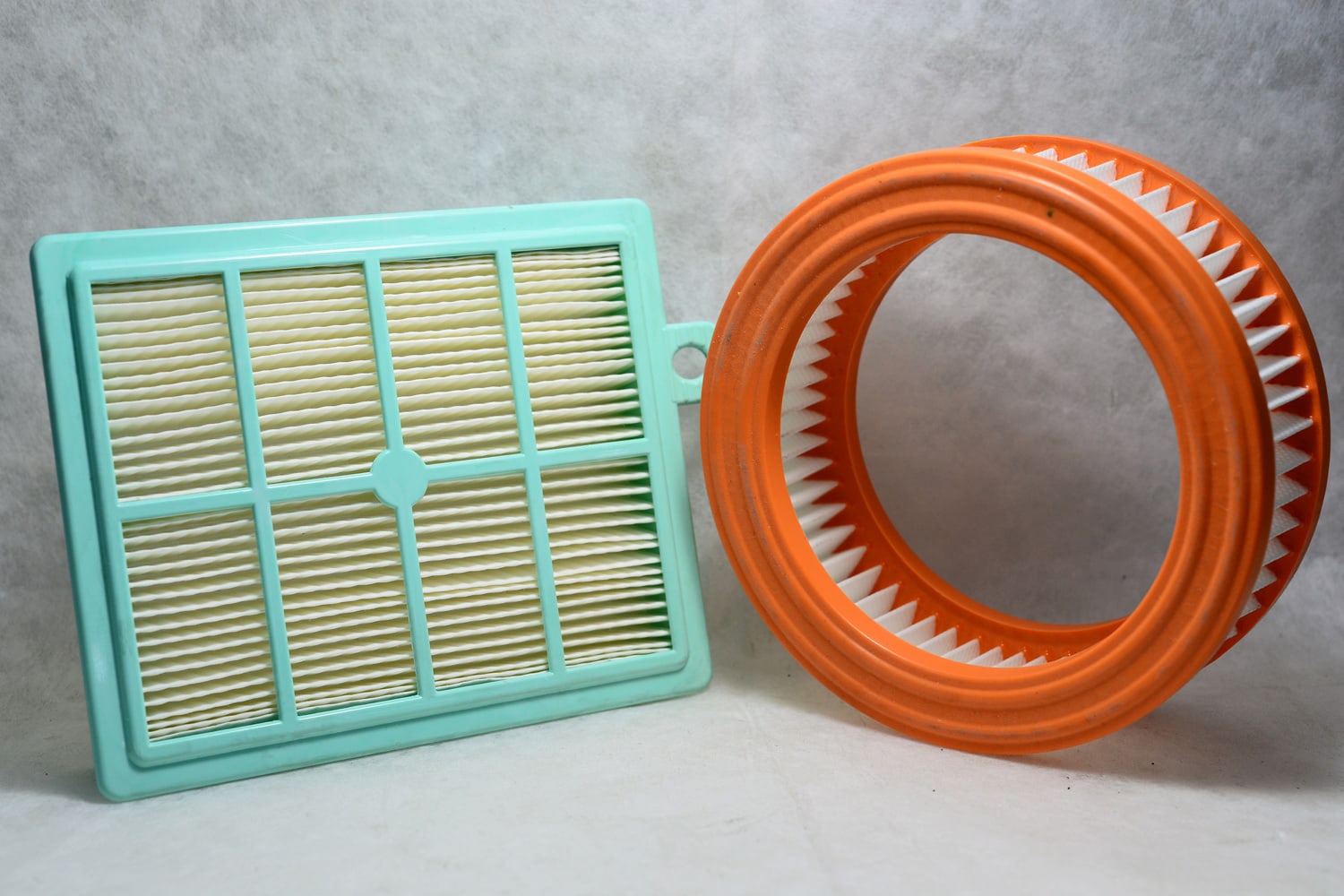
HEPA filters have come a long way since they were first developed for military use. Now, anyone can benefit from their effectiveness in filtering out harmful particles that could cause damage to you and your family's health.
Always remember to check the MERV rating and you should be good to go.
If you found this post insightful, be sure to check out some of our other posts:
Can Pollen Come Through Window Screens?
How Many Air Filters Does A House Have? [And Where Are Filters Located]

